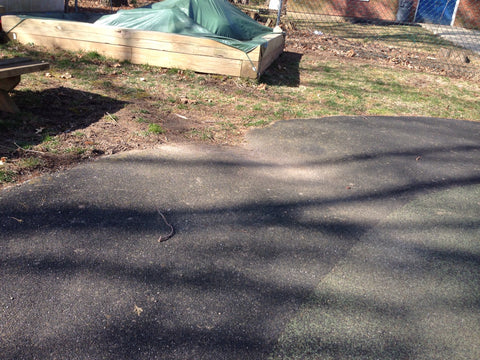The type and quality of the substrate or base that you have for your poured in place rubber or rubberized playground surface is as important or more important than the actual rubber surface. A badly installed base can create very expensive repair later on. Here are the types of acceptable bases you can install the rubber on:
- Concrete. If you already have a concrete surface, this is probably one of the best substrate for a poured in installation. Just prime the concrete, and pour and trowel your base and wear layer. The concrete should have a natural pitch to it so there is no water accumulation that can be problematic later on, especially in Northern climates where you have freeze and thaw cycles. If you are going to pour a fresh concrete slab for your install (Most people don't) make sure you wait 28 days for the concrete to cure before you pour your rubber. As the concrete is cures it emits heat and fumes that don't really get along with the binders and rubber we use in the poured in system.
- Asphalt, especially newer asphalt that is has no cracks or dips, is also ideal for playground rubber installs. You always fill big cracks and caved asphalt with base layer material if you have to to level it. Please keep in mind that even asphalt is as good as the substrate it is sitting on and can have and create sink holes in your playground rubber later on. Just like the concrete, the asphalt has to be thoroughly primed before the base or wear layer is installed on it. Priming ensures a better bond, especially if water accumulation is suspected.
- Crushed stone aggregate, when well done, is a good substrate to install as prep for you playground rubber surface. But this is the one option that is typically not done well, leading to sink holes in your surface in the future as the stone shifts with movement and bad drainage. We use Item 4 road base or 3/4 inch processed stone. We compact the stone a few times, wetting it in the process. The final surface should be well compacted (95% compaction), have a pitch to it so water flows away from the surface, and have almost an asphalt like consistency. When you walk on the surface, you should not be able to dislodge any of the stones.

Dipped Poured in surface.
Whatever substrate you choose, make sure there are no organics present in the site before you install your substrate. Anything that decomposes including, mulch, twigs, leaves has to go first. If you have any questions about substrate installs, please call me at: 203-659-0456 or email me at hal@trassig.com
Hal.
